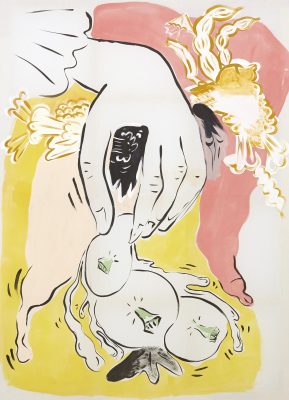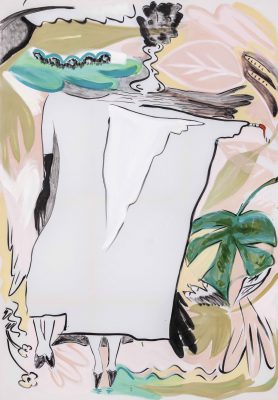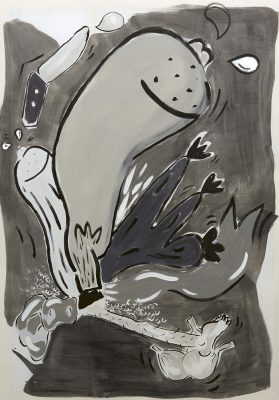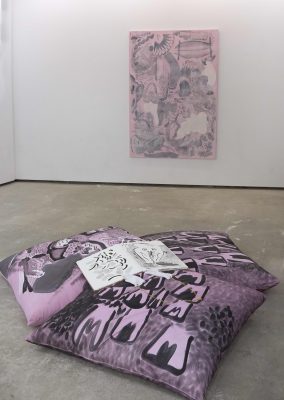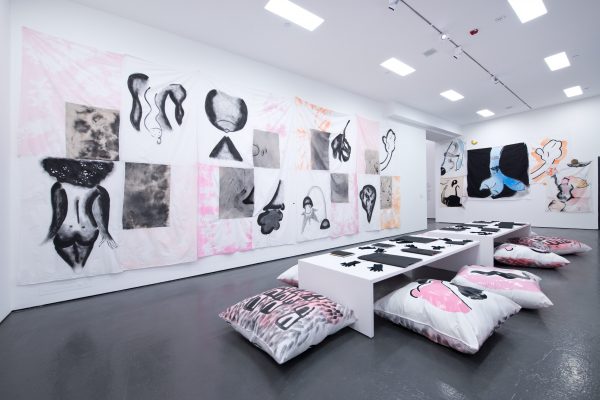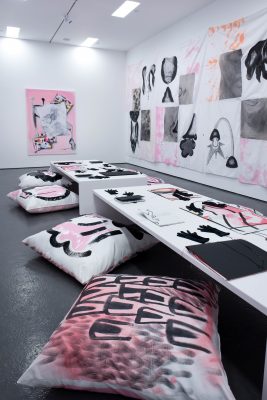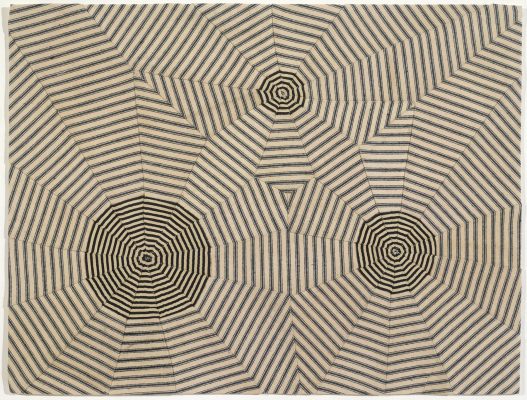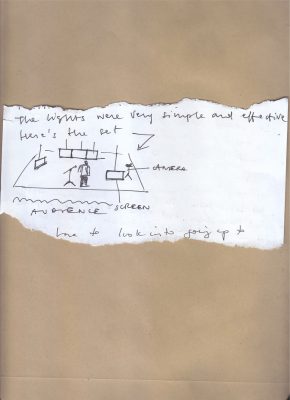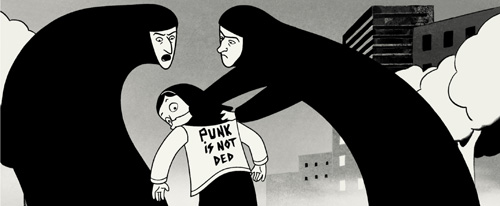We’re prone to speak as if dreaming were either too much or nothing at all. One person’s ‘dreamer’ is a radical, someone who’d storm an old order; another’s is irresponsible, their head in the clouds. The Greek artist Sofia Stevi studies both kinds of dreamer. In ‘turning forty winks into a decade’ at Gateshead’s BALTIC, her first solo show in the UK, scenes painted in Japanese ink on white cotton appear like snapshots from a nocturnal imagination. Bodies arrive as disassembled parts, emerging and receding again through washes of vibrant colour. The human figure is fragmented, distorted – you catch the shapes of noses, fingers, and breasts, as if they were on the move.
The world of Stevi’s paintings is full of cartoonish gusts and brilliant flashes. Take the bursts of air that swirl around the giant hand in just like honey (2016), as it gently pinches a fleshy ball. The painting pleads for comic release: there are hints of honking noses and farting clouds. But the humour is tempered by a suggestion of violence. The fingernail looks sharp, and the balls recoil, tender to the touch.
Stevi’s canvases, like good therapists, await your version of events. (After all, dreams have a multiple logic; there’s no perfect way to describe how they look.) The amorphous shapes in are we ever really in control (2017) and history is not kind (2016) could be human innards or wishbones, and the artist’s use of colour does little to clarify the tone: in the former, the contours are swamped by darkness, and in the latter, they line up proudly in pink. Elsewhere, the uncertain moods of Stevi’s figures keep you guessing. With foliage whipping around them, the sisterly bodies of lizzie & laura (2017) are conjoined in a boxy dress. It’s open to the viewer as to whether they are caged by their outfits, or bound together by love.
In mary’s pink (2017) a cluster of organic shapes occupy the interstice between tulips and cervixes, gesturing to the paintings of Georgia O’Keeffe. Beside a bulb of garlic and a sharp knife in dinner in vienna I (2016), a breast curves and transforms into an aubergine. Desire is present throughout the exhibition, but there’s a whisper of mockery too. In comically parcelling off the anatomy, Stevi makes a burlesque of the history of painting – its fascination with ‘still’ life, its objectification of the body.
On entering the final room, the viewer is invited to engage in something approaching S&M. Across the two long, low tables are spread twelve cotton art-books, collectively titled cahiers (2017); their painted pages are miniature twins of the works on the walls. Arranged around the tables are pillows (2017), psychedelic cushions that Stevi designed, and on which she invites you to lounge. To flick through the cahiers, you put on a pair of black nylon gloves, linked together by a thin black chain. The chain passes behind your neck, and it tightens up and tugs you down each time you lift a page.
The world of ‘turning forty winks into a decade’ is spellbinding and unpredictable. Stevi’s work unleashes the conflicting energy of cartoons: torment can be disguised as puerility, violence can erupt into joy, desire can lampoon its own representation. These paintings pose a formidable, sensual challenge. Stevi abstracts the body into ambiguous contours, then she hands the script to the viewer. You might be looking at pleasure, or fear – or it might be your own dreams looking back.
